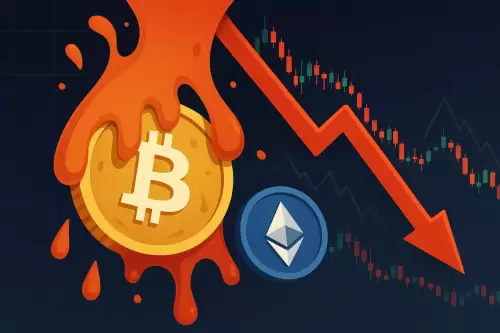 |
|
 |
|
 |
|
 |
|
 |
|
 |
|
 |
|
 |
|
 |
|
 |
|
 |
|
 |
|
 |
|
 |
|
 |
|
Cryptocurrency News Articles
Cardano (ADA) Crypto – Current State and Future Outlook 2025
May 18, 2025 at 11:01 am
Cardano is a third-generation blockchain platform designed to address the scalability, interoperability, and sustainability challenges faced by earlier cryptocurrencies.

Specialized Report: Cardano Crypto – Current State and Future Outlook 2025
Table of Contents
Introduction to Cardano
Cardano is a third-generation blockchain platform designed to address the scalability, interoperability, and sustainability challenges faced by earlier cryptocurrencies. Launched in 2017 by Charles Hoskinson, one of Ethereum’s co-founders, Cardano operates on a research-driven approach, emphasizing peer-reviewed academic rigor in its development process. The native cryptocurrency of the Cardano network is ADA, which serves as both a digital currency and a means to power smart contracts and decentralized applications (dApps) on the platform.
Unlike proof-of-work networks such as Bitcoin, Cardano uses a proof-of-stake consensus mechanism known as Ouroboros, which aims to significantly reduce energy consumption while maintaining robust security. This innovation has positioned Cardano as a leading contender in the race to deliver scalable and environmentally sustainable blockchain infrastructure. The platform’s two-layer architecture—one for value transfer (Cardano Settlement Layer, CSL) and one for smart contracts (Cardano Computation Layer, CCL)—provides flexibility and enhances security for users and developers alike.
As of 2025, Cardano continues to solidify its role in the decentralized finance (DeFi) and non-fungible token (NFT) sectors. The network has seen a notable increase in on-chain activity, with daily transaction volumes frequently surpassing 100,000 and total value locked (TVL) in Cardano-based DeFi projects reaching over $500 million in early 2025, according to DeFiLlama analytics defillama.com. Major upgrades, such as the Vasil hard fork in 2022 and continued enhancements to Plutus smart contracts, have improved throughput and developer experience, fostering a more vibrant ecosystem cointelegraph.com.
Looking forward, Cardano’s roadmap outlines ambitious goals for the next several years. Key initiatives include the further decentralization of governance via the Voltaire era, the integration of sidechains to enhance interoperability, and the introduction of new scalability solutions such as Hydra, which promises to boost transaction capacity to potentially millions of transactions per second as the network matures. These developments, coupled with strategic partnerships and a global expansion of use cases—from digital identity to supply chain tracking—underscore Cardano’s vision of becoming a foundational layer for the decentralized economy of the future.
Cardano Blockchain Architecture
Cardano’s blockchain architecture is distinguished by its rigorous scientific foundation and layered design, with adaptability and long-term sustainability at its core. As of 2025, Cardano operates as a third-generation blockchain platform, aiming to surpass earlier blockchains like Bitcoin and Ethereum in scalability, interoperability, and energy efficiency. Built on the Ouroboros proof-of-stake (PoS) consensus protocol, Cardano’s architecture is designed to optimize decentralization and security while maintaining a low environmental footprint. Ouroboros has undergone several upgrades, such as Ouroboros Praos and Ouroboros Genesis, to enhance resilience against attacks and improve network throughput iohk.io.
The Cardano blockchain is structured in two main layers: the Cardano Settlement Layer (CSL) and the Cardano Computation Layer (CCL). The CSL is responsible for tracking ownership of ADA, Cardano’s native cryptocurrency, and processing peer-to-peer transactions. The CCL, on the other hand, supports smart contracts, decentralized applications (dApps), and tokenization. This separation allows for more flexible upgrades and improvements to each layer without disrupting the entire ecosystem cardano.org.
Recent architectural enhancements, notably the implementation of Hydra—a layer-2 scaling solution—are projected to significantly boost transaction throughput, potentially reaching over one million transactions per second as the network matures. Hydra empowers developers to deploy “heads” or subnets that process transactions off-chain, alleviating congestion and reducing fees on the main chain. These advancements are crucial as Cardano anticipates increased adoption in decentralized finance (DeFi), NFTs, and real-world asset tokenization throughout 2025 and beyond www.coindesk.com.
Looking forward, Cardano’s roadmap for the next few years includes further decentralization (via the Voltaire governance upgrade), enhanced interoperability through sidechains, and broader integration with traditional financial systems. The platform’s reliance on peer-reviewed research and formal verification continues to attract institutional interest, especially as regulatory frameworks evolve globally. With these architectural innovations and a strong developer ecosystem, Cardano is positioned to remain a significant player in the blockchain space through 2025 and into the following years www.cryptobriefing.com.
ADA Token Overview
The ADA token is the native cryptocurrency of the Cardano blockchain, a third-generation decentralized platform that aims to balance scalability, interoperability, and sustainability. As of 2025, ADA remains among the top 10 cryptocurrencies by market capitalization, with a circulating supply exceeding 35 billion tokens out of a maximum capped supply of 45 billion. This fixed
Disclaimer:info@kdj.com
The information provided is not trading advice. kdj.com does not assume any responsibility for any investments made based on the information provided in this article. Cryptocurrencies are highly volatile and it is highly recommended that you invest with caution after thorough research!
If you believe that the content used on this website infringes your copyright, please contact us immediately (info@kdj.com) and we will delete it promptly.






























































